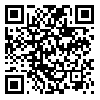دوره ۷، شماره ۳ - ( ۹-۱۳۹۰ )
جلد ۷ شماره ۳ صفحات ۶۶-۶۵ |
برگشت به فهرست نسخه ها
Download citation:
BibTeX | RIS | EndNote | Medlars | ProCite | Reference Manager | RefWorks
Send citation to:



BibTeX | RIS | EndNote | Medlars | ProCite | Reference Manager | RefWorks
Send citation to:
Moghimi Dehkordi B, Safaee A. Necessity of Standard Classification of Occupation by Researches. irje 2011; 7 (3) :65-66
URL: http://irje.tums.ac.ir/article-1-44-fa.html
URL: http://irje.tums.ac.ir/article-1-44-fa.html
مقیمی دهکردی بیژن، صفایی آزاده. لزوم استانداردسازی طبقهبندی شغلی در تحقیقات. مجله اپیدمیولوژی ایران. ۱۳۹۰; ۷ (۳) :۶۵-۶۶
۱- مرکز تحقیقات گوارش و کبد دانشگاه علوم پزشکی شهید بهشتی ، b_moghimi_de@yahoo.com
۲- مرکز تحقیقات گوارش و کبد دانشگاه علوم پزشکی شهید بهشتی
۲- مرکز تحقیقات گوارش و کبد دانشگاه علوم پزشکی شهید بهشتی
چکیده: (۱۰۰۶۱ مشاهده)
Dear Editor
We read with interest the recent original article by Esmailnasab and his colleagues (1) discussing the issue of influencing factors on type 2 diabetes in Sanandajd. The authors are to be congratulated for conducting such an important topic both for healthcare providers and researchers. We have noticed that in that interesting paper the occupational status was classified unclearly into four categories as "housekeeper", "employee", "farmer and free job" and "unemployed" that the journals reviewers have been overlooked this easily. Since one of the main characteristic of occupation is making money, some groups such as "student" and "housekeeper" are excluded from this category.
There are several international classifications for occupational status that can be used for national studies in Iran. These categorizations also called "social class" that considered to occupational exposure, amount of income and some other components. One of these classifications is presented by the International Labor Organization (ILO). A number of countries have localized this classification and many countries have used it without changes (2). The latest revised classification (ISCO) has been revealed 11 occupational groups (major group) provides the following (3): 1- Legislators, senior officials and managers, 2- Professionals, 3- Technicians and associate professionals, 4- Clerks, 5- Service workers and shop and market sales workers, 6- Skilled agricultural and fishery workers, 7- Craft and related trade workers, 8- Plant and machine operators and assemblers, 9- Elementary occupations, 11- Armed forces.
It seems that with modification of such classifications, we could obtain a national standard categorization for occupation and then would be able to better understanding the role of occupation in development of disease and health problems.
واژههای کلیدی: کلیدواژه ندارد###
ارسال پیام به نویسنده مسئول
| بازنشر اطلاعات | |
 |
این مقاله تحت شرایط Creative Commons Attribution-NonCommercial 4.0 International License قابل بازنشر است. |





